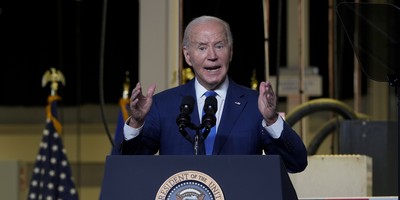Are stock splits good for the share price or not? Deceased Nobel Prize winning economist Merton Miller didn’t like them. “Everyone recognizes that’s a joke because obviously the number and shape of the pieces doesn’t affect the size of the pizza. And similarly, the stocks, bonds, warrants, etc., issued don’t affect the aggregate value of the firm.” He also said, “Another is, if you take money out of your left pocket and put it in your right pocket, you’re no richer.”
However, some research shows differences in the actual data. Professor David Ikenberry studied splits, here is what he found.
A 1996 study by David Ikenberry of Rice University measured the short and long-term performance of stock splits. His research included all the 1,275 companies whose stock split 2-for-1 between 1975 and 1990. Mr. Ikenberry compared the split stocks to a control group of stocks for similar-sized companies in similar sectors that had not split. His results were startling. The split stock group performed 8% better than the control group after one year, and 16% better after three years.
In August 2003 Mr.Ikenberry – now Chairman of the Finance Department at the University of Illinois at Urbana-Champaign – updated the stock split study. This time he looked at companies from 1990 to 1997. Using a similar methodology that included 2-for-1, 3-for-1 and 4-for-1 stock splits, he found the results were essentially the same. Shares of split stocks on average outperformed the market by 8% the following year and 12% over the next three years.
In Hong Kong, the study was replicated
“Although stock splits seem to be purely cosmetic, there is ample empirical evidence that they are associated with abnormal returns. This study analyzes the effect of stock splits using intraday data and insider trading data in Hong Kong from 1980 to 2000. Consistent with the findings of other countries, we observe positive price reactions in Hong Kong.”
Recommended
Interestingly, they don’t seem to help liquidity.
We examine how liquidity measures change around more than 2,500 stock splits and find a pervasive decline in most measures. Large stock splits exhibit a more severe liquidity decline than small stock splits, especially on Nasdaq. We also examine a longer time period around stock splits and find that the differences between small and large stocks may be short-lived. Following the 1997 changes in order handling rules and reduction in tick size, liquidity declines following stock splits continue, however, the declines are not as severe on Nasdaq, suggesting the change in order handling rules may have been effective.
The sentiment is generally bullish after a stock split. But, what’s interesting is who is doing the buying and who is doing the selling.
Although stock splits appear to have little effect on the trading behavior of large traders (trade value of at least $100,000), they are associated with significant decreases in odd-lot trading and increases in small board-lot trading (trade value of less than $10,000). Although the liquidity premia decrease for all trade sizes, trade direction changes significantly from sell to buy after split ex-dates for all but the large trades, where the change is in the opposite direction. The significant increase in variances after split ex-dates is explained by various microstructure-related variables, and small (large) trades appear to be (de)stabilizing.
Warren Buffet was never going to split his stock. When he did, there was a lot of research and consternation over it. Here is something from a Forbes article written at the time.
The first study of stock splits was authored by the economist Eugene Fama in the late 1960s. It found that, in the long run, stocks performed no differently after a split, unsurprising since Fama is the inventor of the efficient markets theory. Later studies found a significant boost to shareholder returns over the long term but the results vary dramatically depending on what data is used. The only really reliable evidence is for a short-term pop around the time a split is announced and when it goes into effect. Indeed, Berkshire’s stock gained 1.8% on Nov. 3, the day the split was announced, and is up 5.7% since the news broke.
Other findings are potentially more troubling to Berkshire’s devoted owners. Splits tend to increase the volatility of shareholder returns. A 1985 examination found that stock splits boost the deviation of shareholder returns from their historical mean by 30% and that the effect was unchanged a year after the split. Researchers think that a lower price per share and the buzz that surrounds a split announcement end up increasing trading volume by drawing in unfamiliar buyers.
Wild swings in a company’s shares may benefit Wall Street trading desks but they do no service to long-term holders, as Buffett has acknowledged. He has written that he aims to have Berkshire stock reflect the company’s intrinsic value as often as possible. The reason is that an overpriced stock may benefit the seller but Berkshire would be gaining a soon-to-be-disappointed owner who paid too much.
In conclusion, it looks like short term, a stock split is bullish. For the day trader, it should open up a lot of opportunities because volatility will increase. But long term, it’s not bullish or bearish and will fall back into the efficiency of the market. The real onus on share performance is on management.
Run a good operation and make money, build market share, your price should increase. Don’t, and it decreases. You are investing in a company, but more importantly in the management team in place. They get the job done, you’ll be happy.

























Join the conversation as a VIP Member